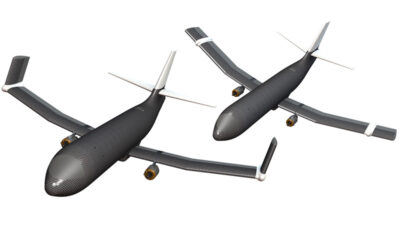Explosive growth in electric propulsion
By James Szabo|December 2019
The Electric Propulsion Technical Committee works to advance research, development and application of electric propulsion for satellites and spacecraft.
As the year began, the European Space Agency’s BepiColombo spacecraft continued toward Mercury, propelled by QinetiQ gridded ion thrusters. The power processing units were developed by Airbus-Crisa. BepiColombo was launched in 2018 and is scheduled to arrive at Mercury in 2025. Also early in 2019, a BHT-200 Hall effect thruster, or HET, built by Busek Co. of Massachusetts entered operational status on the FalconSat-6 satellite, launched in December 2018.
In February, four Aerojet Rocketdyne XR-5 HET strings were launched on Hellas-Sat. In August, another four XR-5s were launched on Advanced Extremely High Frequency-5. Arabsat 6A, launched in April, and another geostationary spacecraft launched during the year will both employ Aerojet Rocketdyne hydrazine Arcjets for North-South station keeping.
Also in February, OneWeb Satellites launched its first six spacecraft out of hundreds planned. OneWeb’s low-power electric propulsion system, conceived by Airbus, features xenon HETs and innovative electronics and propellant regulation systems. The electric propulsion subsystem is also part of the Arrow platform used for other Airbus applications. In May, the SpaceX Starlink constellation began to take shape with the launch of 60 operational satellites propelled by krypton-fueled HETs. SpaceX has received FCC approval to launch thousands more.
High-power electric propulsion will soon become part of NASA’s human exploration program. NASA’s Power and Propulsion Element, the first planned element for the lunar Gateway, will carry two Aerojet 13-kilowatt Advanced Electric Propulsion System HETs and four Busek 6-kW HETs. In May, NASA awarded the Power and Propulsion Element contract to Maxar Technologies. In August, the 13-kW thruster was tested at full power. Launch was scheduled for 2022.
Accion Systems Inc. of Massachusetts set a record for its electrospray thruster chip technology by firing a test unit for about 2,500 hours without intervention, achieving approximately 100 newtons of total impulse. The test concluded in May. Midyear, two of Busek’s small capillary-driven BET-300-P electrospray thrusters each exceeded 70Ns of total impulse, with the second test finishing in September.
In July, an electric propulsion system integrated test was completed for the Psyche mission. The Maxar-Jet Propulsion Laboratory spacecraft, which is scheduled for launch in 2022, will use a modified SPT-140 HET system to rendezvous with the asteroid 16 Psyche in 2026.
In September, Aerojet Rocketdyne and subcontractor ZIN Technologies of Ohio finished assembling the first flight string of the 7-kW NEXT-C gridded ion engine system. In 2021, NEXT-C will fly on NASA’s Double Asteroid Redirect Test, managed by the Johns Hopkins University Applied Physics Laboratory.
Also in September, Ad Astra Rocket Co. started a Variable Specific Impulse Magnetoplasma Rocket, VX-200SS, testing campaign, to complete a thermal steady-state 100-kW milestone. Ad Astra also bench-tested to full power a 120-kW Technology Readiness Level-5 power processing unit from Aethera Technologies of Canada, measuring 98% direct-current-to-radio-frequency efficiency.
Researchers at the University of Tokyo previously reported developing and testing a three-unit cubesat called AQT-D equipped with a 1U water Resistojet system called AQUARIUS. In September, AQT-D was launched to the International Space Station.
NASA’s Jet Propulsion Laboratory in California is developing the Ascendant Sub-kW Transcelestial Electric Propulsion System, or ASTRAEUS, small satellite HET system for interplanetary missions, targeting a throttle range of 150 to 1,000 watts and 100-kilogram xenon throughput, peak system efficiency greater than or equal to 50%, and dry mass less than or equal to 10 kg for the thruster, PPU, flow controller and gimbal. Meanwhile, a Busek BHT-600 HET duration test accumulated 6,300 hours at 600 W through November, demonstrating 860 kilonewtons of total impulse and 60 kg of xenon throughput.
In November, Busek delivered the first low-power, iodine-fueled, gridded ion thruster flight system. Two more were scheduled for delivery before the end of the year.



































